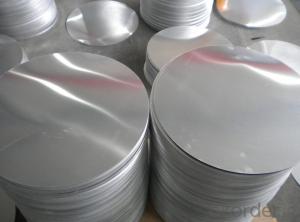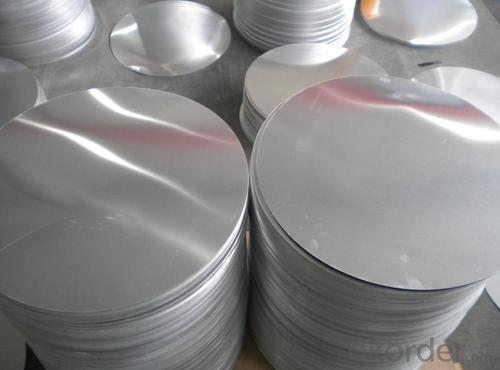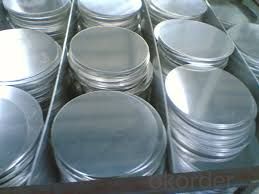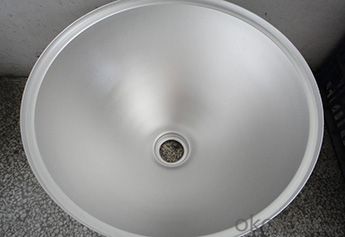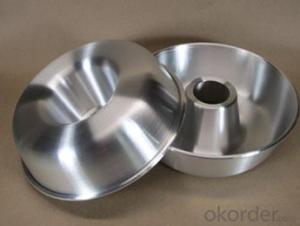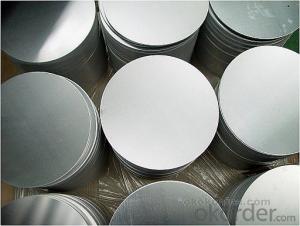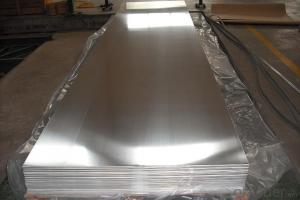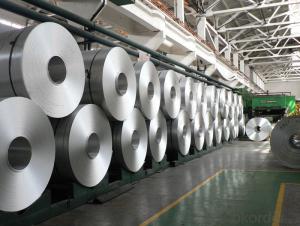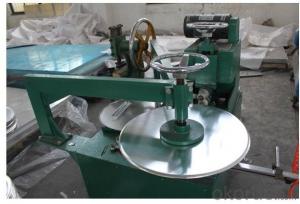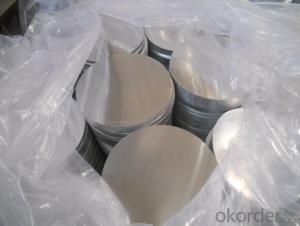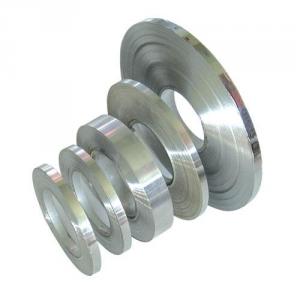Stamped Aluminum Sheets - Hot Rolling Alloy 1050 Aluminum Circle Sheet
- Loading Port:
- Tianjin
- Payment Terms:
- TT OR LC
- Min Order Qty:
- 5 m.t.
- Supply Capability:
- 600 m.t./month
OKorder Service Pledge
OKorder Financial Service
You Might Also Like
Specification
Hot Rolling Alloy 1050 Aluminium Circle Sheet
Professional aluminum product manufacturer
We have our own plant , Laboratory and engineer
Over 100 models can totaly satisfy your request
As powerful and stronger factory, our aluminum quality is very stable and reliable
2 years warranty period
Specifications:
Thickness:0.5mm-6.0mm
Width:100mm-900mm
Surface:Bright & smooth surface, not defects like white rust, oil patch.
Product Information :
Product | Aluminum Circle |
Alloy | 1050 1060 1070 1100 1200 |
Temper | O, H12, H14, H18 and H24... |
Thickness | 0.5mm-6.0mm |
Diameter | 100mm-900mm |
Lead Time | Within 30-45 days after receiving deposit |
Packing | Standard Exporting wooden pallets or based on customer requirement |
Material | Using high-tech machinery utilizing premium grade Aluminium Coil. Customized according to the needs and demands of the clients these can be availed at different technical specifications. |
Surface: | Bright & smooth surface, free from defects like white rust, oil patch, edge damage. |
Application | Aluminium Circles are used in Reflective Sign Boards, Road Furniture, Utensils, Sand witch Bottom, Cooker, Non-Stick etc. |
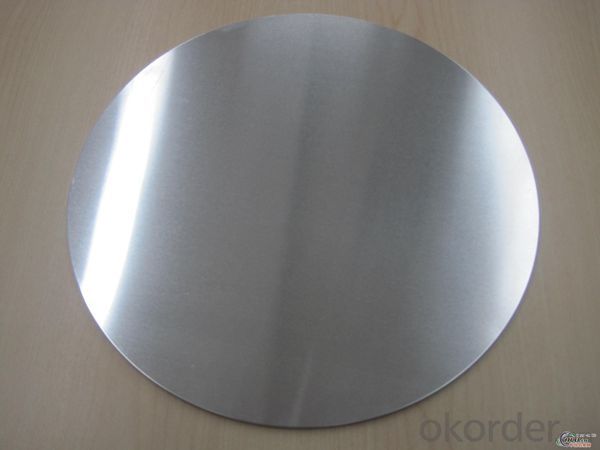

- Q: The corrosion of the aluminum sheet that I request is friction during operation, not the surface of the container after the passivation of the surface of the container containing sulfuric acid. I'd like to use the evaporating plate, the evaporator fin and so on for the cooling in the quick freezing equipment. The ice of ice making machine is attached to the aluminum plate after anodic oxidation or passivation. When it is peeled off, it will cause friction to the surface of the aluminum plate and block the passivation layer, which will make the aluminum plate easier to corrode.
- Directly on the surface coating H2SO4Because the AL and H2SO4 react to produce a dense oxide film that prevents corrosion again, the barrel containing sulfuric acid can be made from AL
- Q: I'm trying to use as little aluminum as possible as it can be related to health problems, and I'm just trying to be a little more careful. I just bought the Emerilware pro-clad pot and pan set, and it's stainless steel but says Emerilware Pro-Clad is constructed with an aluminum core bonded between two layers of stainless steel ideal for... Therefore, I'm still cooking with aluminum. Is it safer since it's between 2 pieces of stainless steel? Does any stainless steel cookware not use aluminum? Thanks.
- Aluminum and titanium are lighter, but they are easier to scratch (due to non-stick coatings) and do not hold heat as well. Stainless steel is more durable and distributes heat better. You can also clean it with sand or ice without having to worry about scratching it. If you are going to fry with it, you will need oil since the food will stick without it. When I go ultra light, I use a jet boil with a titanium pot to boil water for cooking. When I want to go gourmet, I use the GSI stainless steel set.
- Q: Can the aluminum sheets be used for manufacturing chemical storage tanks?
- Indeed, chemical storage tanks can be manufactured using aluminum sheets. Aluminum proves to be a flexible substance with numerous benefits for this particular application. Notably, its lightweight nature, resistance to corrosion, and impressive strength-to-weight ratio make it an ideal choice for securely storing a wide range of chemicals. Moreover, aluminum can be effortlessly molded into various configurations and dimensions, enabling the customization of storage tanks to suit specific needs. Nevertheless, it is crucial to take into account the type and concentration of the chemicals to be stored, as certain substances may potentially react with aluminum. In such instances, it becomes vital to employ appropriate coatings or linings to avert any chemical reactions.
- Q: Can aluminum sheets be anodized for corrosion protection?
- Yes, aluminum sheets can be anodized for corrosion protection. Anodizing is an electrochemical process that creates a protective oxide layer on the surface of the aluminum. This oxide layer is highly resistant to corrosion and provides a durable and long-lasting protection. Anodizing can be done on various aluminum products, including sheets, to enhance their corrosion resistance, improve their appearance, and increase their lifespan. The process involves immersing the aluminum sheet in an electrolyte solution and applying an electric current, which causes oxygen ions to bond with the surface of the metal, forming the protective oxide layer. Anodized aluminum sheets are widely used in industries such as aerospace, automotive, construction, and electronics, where corrosion resistance is crucial.
- Q: why can aluminum sheet after oxide film removal react quicker with hydrochloric acid?
- the reason is very simple, the original aluminum sheet has a layer of dense oxide film AI2O3, which has prevented the inner aluminum sheet from reacting with hydrochloric acid. but after oxide film removal, aluminum sheet will directly contact hydrochloric acid, generating H2.
- Q: Can 101 aluminum sheets be customized in terms of size and thickness?
- Yes, 101 aluminum sheets can be customized in terms of size and thickness. Aluminum sheets can be cut to the desired size and thickness using various cutting techniques such as shearing, sawing, or laser cutting. Additionally, aluminum sheets can also be rolled or stretched to achieve the desired thickness. Customizing the size and thickness of aluminum sheets allows them to be tailored to specific applications or requirements.
- Q: im wondering what happens if you MIG weld aluminum with the correct wire but without using a shielding gas? Would it just be extremely messy or does there HAVE to be an inert gas flowing for it to bond?thanks
- In the presence or air, the aluminum oxidizes so fast that making a bond becomes extremely difficult. The shielding gas prevents oxidation by excluding oxygen. The gas doesn't enter into the process, it just inhibits oxidation.
- Q: How do you calculate the weight of an aluminum sheet?
- To determine the weight of an aluminum sheet, one must take into account its dimensions (length, width, and thickness) as well as the density of aluminum. Initially, one should measure the length, width, and thickness of the aluminum sheet in either inches or millimeters. It is crucial to use a consistent unit of measurement throughout the calculation. Subsequently, if necessary, the dimensions should be converted to feet or meters. For instance, if the dimensions are in inches, divide each value by 12 to convert them to feet. To ascertain the volume of the aluminum sheet, multiply the length, width, and thickness together. In case the dimensions are in different units, they must be converted to the same unit before multiplying. Next, consult a reference for the density of aluminum. Aluminum's density is approximately 2.7 grams per cubic centimeter or 2700 kilograms per cubic meter. Convert the volume of the aluminum sheet to the same unit as the density. For example, if the density is in kilograms per cubic meter and the volume is in cubic feet, multiply the volume by 0.0283 to convert it to cubic meters. Lastly, multiply the volume of the aluminum sheet by the density of aluminum to determine the weight of the sheet. The resulting weight will be in grams or kilograms if the density was in grams per cubic centimeter, or in kilograms or metric tons if the density was in kilograms per cubic meter. It is important to note that this calculation assumes a uniform thickness throughout the aluminum sheet. If the sheet has varying thicknesses, one must calculate the weight of each section individually and then sum them to find the total weight.
- Q: What are the different thickness tolerances for aluminum sheets?
- The thickness tolerances of aluminum sheets can vary based on the grade and application. Normally, the standard tolerances range from +/- 0.006 inches to +/- 0.015 inches. However, it is important to recognize that these tolerances can be stricter or more lenient depending on the specific requirements of the end-use application. For example, in precision-focused industries like aerospace or automotive, tighter tolerances of +/- 0.003 inches might be necessary. Conversely, for less critical applications, looser tolerances of +/- 0.020 inches may be acceptable. To determine the suitable thickness tolerances for a particular aluminum sheet, it is always advisable to consult industry standards or manufacturers' specifications.
- Q: Is it possible to utilize aluminum sheets for the construction of outdoor advertising billboards?
- <p>Yes, aluminum sheets are commonly used for outdoor advertising billboards due to their durability, lightweight, and resistance to weather conditions. They are easy to install, maintain, and can be printed with high-quality graphics. Additionally, aluminum's corrosion resistance makes it a sustainable choice for long-term outdoor use.</p>
Send your message to us
Stamped Aluminum Sheets - Hot Rolling Alloy 1050 Aluminum Circle Sheet
- Loading Port:
- Tianjin
- Payment Terms:
- TT OR LC
- Min Order Qty:
- 5 m.t.
- Supply Capability:
- 600 m.t./month
OKorder Service Pledge
OKorder Financial Service
Similar products
Hot products
Hot Searches
Related keywords
